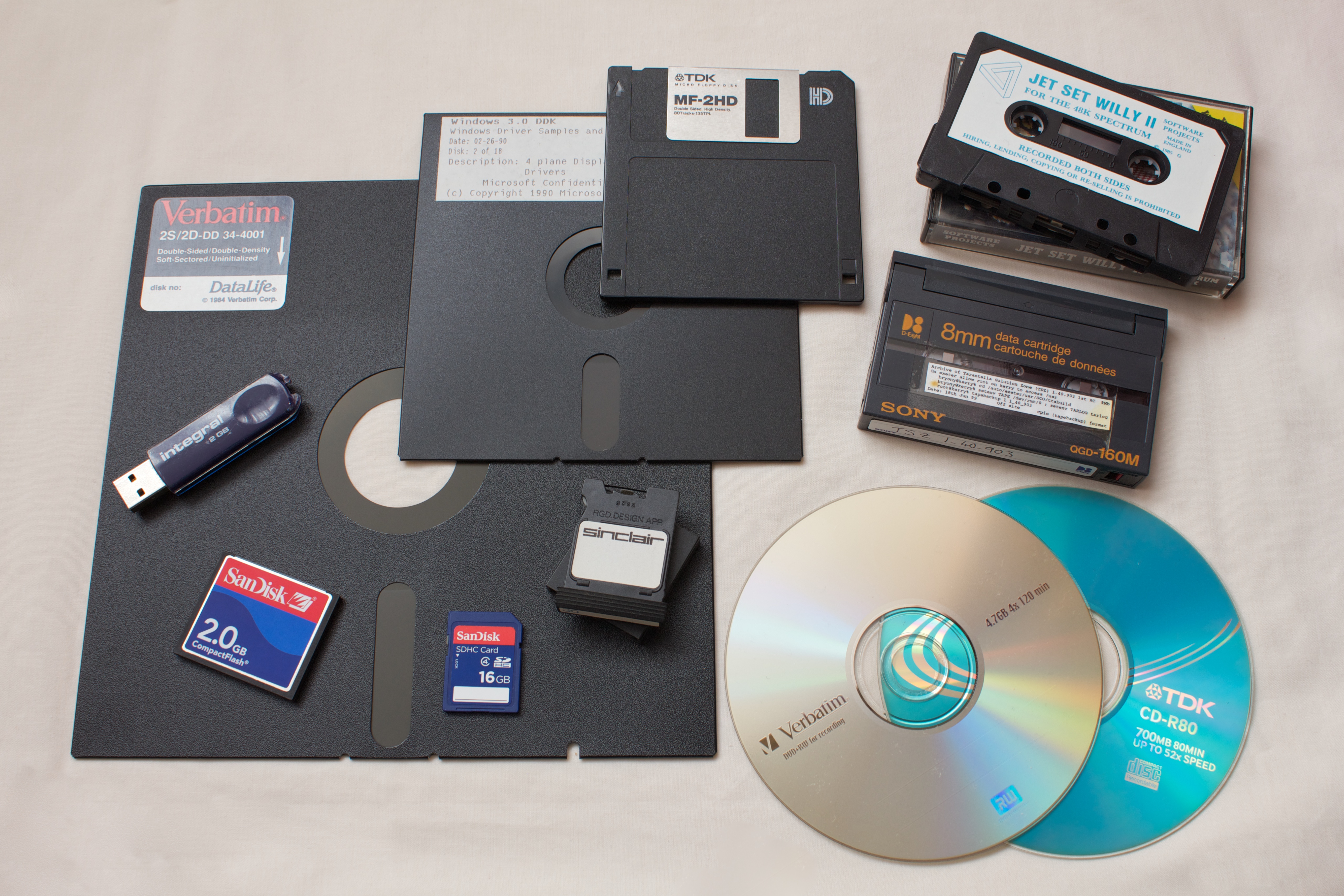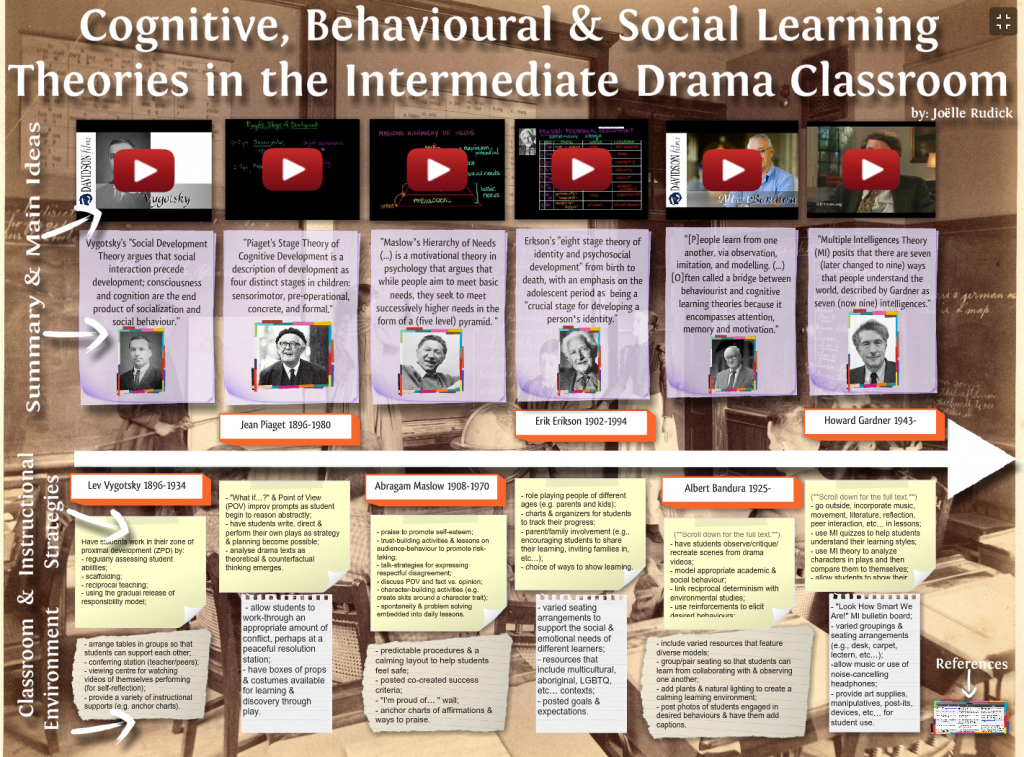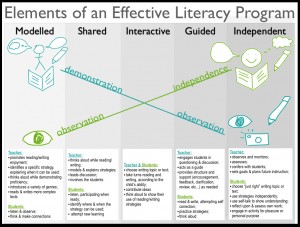Here is the 10-minute version of my 4 minute podcast that I created for an AQ assignment.
The questions were:
a) What is your experience with blogging? Would you / have you used it in conjunction with your classroom?
b) Many teachers want to “go paperless”. How do you feel about this idea? Is it one that you would embrace? Why? why not?
c) How does your school board address professional development when it comes to technology?
In this longer version I talk more about my school board’s approach to tech PD, whereas in the shorter version I focus more on how we have incorporated tech into the delivery of PD from our Curriculum Services department.
Enjoy!
This is the first of a series of posts that I am writing based on prompts from my Integration of Information and Computer Technology in the Classroom Part 2 course.

Looking Back…
Looking waaaaaayy back, I remember when, as a pre-teen, I swore off typing and computers all together. Imagine a pre-teen today shunning technology? It seems laughable!
In my previous career, I recall an assistant showing me graphs that she made with Excel. I was blown away. From then on, my attitude became, if I know what is possible, I can learn it (or at least try)! By the time I entered teachers’ college in 2006, I was a fairly adept Photoshop user (despite a lack of talent in the visual arts) and, thanks to having seen a PhotoStory created by a guest lecturer, I jumped in to my student teaching by creating one with the students to document our learning.
Fast forward and I have integrated technology in various ways in my intermediate classroom (at a time when bringing tech into the classroom doubled as a workout since it was so bulky and heavy), when I was a JK-6 itinerant teacher on a cart, when I worked in a (far-flung) portable, and when I found myself back inside a school with chromebooks, projectors, laptops, etc… My practice evolved from Smart Notebook and Comic Life to blogging, GSuite, and dabbling in the flipped classroom environment.
In my most recent position as an Early Years/French as a Second Language Instructional Coach, I have integrated technology in a number of ways, including:
- Delivering professional development by Google Classroom;
- Using Google Forms to gather information about educators’ interests for professional development;
- Collaborating with colleagues by using Google Drive, Docs and Slides to create shared resources;
- Using Google Forms to gather feedback from session participants;
- Using my iPad to photograph action plan/exit cards from participants so that they could take them with them and we (the presenters) could have a record of what was most impactful about our sessions and what participants intended to implement in their classrooms.
Every year and in every teaching situation, I have refined what I did in years before, and added new ways of integrating technology. As the girl who swore off typing and computers, I’m pretty proud of that.
I have only been in my current role since September (and left on a parental leave in April). I don’t yet know how my practice will evolve when I return to this role in November 2017, but I will be looking to see what is possible, so that I can learn it and give it a try.
Looking Ahead…
I joined Twitter in 2009 and it was amazing connecting with so many thoughtful educators! However, I was one of those junkies who read everything those I followed were tweeting and blogging about. That worked well when I was younger and only has one kid, but eventually, I ended up cutting Twitter out of my life instead of finding a balance.
I started a classroom blog back in 2011 and it became my new online love. Through my blog I made great connections with my students and their families and my blogs serve as documentation of my previous years of teaching. However, a few years ago we went on a work-to-rule-type strike, and I had to reduce my blogging to a bare minimum. When we returned from strike action, I realized that my blogging muscles had gotten lazy. In truth, I never returned to blogging with the same frequency as I had during those pre-strike years and I abandoned this professional musings blog completely, except for AQ-related posts.
Moving forward, my pedagogical goals are related to engaging with and growing my PLN by returning to Twitter and blogging in meaningful and sustainable ways. I look forward to learning from other educators and being held accountable!
Here is a screen shot of a glog that I made using Glogster for my Intermediate Drama ABQ course that I am taking through the University of Western Ontario. My students and I had played around with Glogster back in 2009 and the kids loved it. Unfortunately, those were the days before templates (or before I had found them?) and everything we created looked rather garage-sale-chic. Today, Glogster has lots of neat templates and I used the Space Discoveries template as my inspiration for this glog.
Click the picture to see the glog on its native site. (Once it is fully loaded, click the white frame at the top right for a full screen view – otherwise, get yourself a magnifying glass!)

Have you ever used Glogster with your students?
As part of my Kindergarten Part 2 course, I thought through how I might interact with a group of children and alter the environment in my class so as to promote the goals of Ontario’s Full Day Early Learning-Kindergarten Program, to suit the needs of four children outlined in a particular learning story.
Not having my own Kindergarten class at the time of writing, I am sharing my assignment here in hopes that it might be useful to someone out reading who does. (Also, sharing this assignment with a wider audience was part of the assignment!)
Happy reading, if you are so inclined!
LE3-8 Entering Play
As part of my Kindergarten Part 1 AQ, I reflected on what makes a welcoming class and realized that, for me, it is important to think about how my class can be a welcoming space for adults, and not just for students. Here, en bref, are some of my thoughts on spaces that can be created to make adults feel welcome and purposeful in an elementary school class: Space for Classroom Teachers
Space for Classroom Teachers
An organized prep area and ample storage keep the class in order and assessments on track.
Places for Volunteer
Scheduled volunteers work seamlessly, reading with students and preparing materials.
 A Presence Online
A Presence Online
A regularly updated blog with pictures and resources helps families feel connected.
Access for Itinerant Teachers
A layout that easily allows a cart to be wheeled to the carpet is essential for itinerant teachers.
Easy, eh?
(The first two pictures are from Laura Ladouceur’s class at South March Public School and the second two are of my own class blog and mobile teaching cart.)
 I am thrilled to be co-presenting an introductory AIM workshop for teachers at Académie St-Laurent Academy, alongside AIM guru and co-OCDSB teacher, Richard Smith. We are in for a great two days together!
I am thrilled to be co-presenting an introductory AIM workshop for teachers at Académie St-Laurent Academy, alongside AIM guru and co-OCDSB teacher, Richard Smith. We are in for a great two days together!
(Psst! To view the related password-protected posts, please use the password provided during the workshop.)
 As part of my Kindergarten Part 1 AQ, I created this infographic to show the elements of an effective literacy program. My doodles and lines could be cleaned up a bit, and the text layout could use some work, but overall, I am pretty happy with how this turned out. The teacher is represented in blue, and the students in green, showing their responsibilities along a continuum. Click to enlarge to a readable size. :)
As part of my Kindergarten Part 1 AQ, I created this infographic to show the elements of an effective literacy program. My doodles and lines could be cleaned up a bit, and the text layout could use some work, but overall, I am pretty happy with how this turned out. The teacher is represented in blue, and the students in green, showing their responsibilities along a continuum. Click to enlarge to a readable size. :)
The drawings and layout ideas are my own. The text is inspired and at times borrowed from “Effective Instruction: Vygotskian Perspective on Cognitive Development – Ideas That Work for Me” by Jennifer Ramsay (adapted from A Guide to Effective Instruction in Literacy, Grades 4 to 6, Volume One, Foundations of Literacy Instruction for the Junior Learner, 2006, p.79-91 and A Guide to Effective Instruction in Reading, Kindergarten to Grade 3, 2003, p. 2.11 to 2.15) and from “What Is Balanced Literacy”, a one-page resource put out by the Elementary Teachers’ Federation of Ontario (ETFO).
(I am toying with the idea of changing the bottom right teacher text to “documentation” rather than “observation”…)
 I am taking the Kindergarten Part 1 AQ with ETFO and as part of my learning, I am reviving this blog to share some of my thoughts:
I am taking the Kindergarten Part 1 AQ with ETFO and as part of my learning, I am reviving this blog to share some of my thoughts:
Not having a kindergarten classroom of my own, I have based this project on a class that I have really enjoyed working in as a Core French teacher. I also visited and took pictures of eight other classes in my local schools, since I felt that it would be most beneficial for me to consider space, furniture, and budget constrains of classes I may reasonably expect to work in one day.






